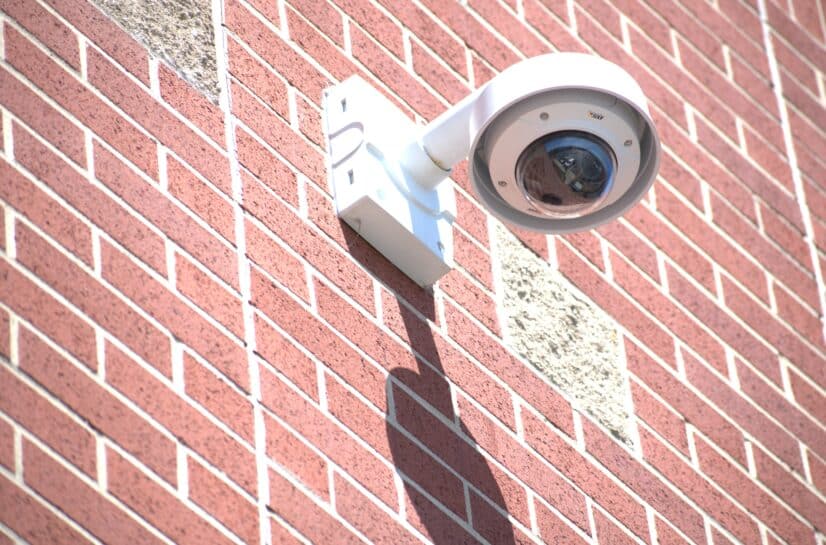Many businesses use a security camera system to monitor their facilities around the clock. If your company is looking to adopt a security camera system or upgrade its existing one, you should know that the installation of a system doesn't have to be difficult and confusing.
There are a few things, however, that you should keep in mind. These systems are an investment, and you want to ensure that your system is effective in monitoring and recording all the critical areas around your facilities.
The Latest Business Security Camera Technology
If you guessed that the security cameras themselves are the most important part of a security camera system, then you guessed right. There are many different types of cameras that are designed to capture footage from your facilities and send it to both monitoring and storage devices.
Consider the following different types of business security cameras and their capabilities:
- Bullet camera. This oblong type of camera is designed to focus on a specific area. These cameras have better range and zoom capabilities than other types of security cameras. Bullet cameras can be outfitted with night vision and infrared capabilities.
- Dome camera. This kind of camera is best for covering a wide field of vision. This makes them ideal for retail stores, restaurants and hotels. Typically mounted on indoor ceilings, Dome cameras tend to be out of the way and dirt-resistant.
- PTZ (pan, tilt, zoom) camera. These cameras allow an operator to control their aim and focus using a joystick or computer program. They can be controlled manually or through automation. These cameras are best for sensitive facilities where it’s important to be able to track suspicious-looking vehicles and persons.
- Fisheye camera. Using the distinctive fisheye effect, these cameras offer a very wide field of view. However, these cameras aren't great for picking out finer details in an image. They are commonly used for parking lots and warehouses, where there isn't much need to track fine details happening within a scene.
Storing Video from a Business Security Camera System
Because it's often necessary to review previously captured video, many business security camera systems have a method for storing video for a set amount of time.
The industry-standard way to capture and store video is a device called a network video recorder (NVR). A typical NVR has multiple input channels so that the device can store multiple video feeds at the same time. It is connected to the same network as your security cameras and it can be wall mounted or placed on a flat surface.
An NVR is somewhat similar to the DVR you might use to record television shows. However, an NVR is designed to work with digital network cameras, whereas a DVR is mostly designed for recording a video feed. Also, a DVR typically receives video over a coaxial cable while an NVR is connected with Ethernet cables.
The biggest challenge with this part of a business security camera installation is figuring out how much storage capacity you need. You need to consider the length of video you want to store, as well as the bitrate and resolution of your cameras. For example, storing 1080p video in 24-hour increments won't require nearly as much storage space as storing 4K video in 48-hour chunks.
The Physical Installation of a Business Security Camera System
Camera positioning is the most important part of any security system installation. Installers must pay attention to each camera's field of view in order to avoid blind spots. They also need to consider the lighting in each area so that each camera can produce well-lit images. Ideally, cameras should be installed so that they are inconspicuous and out of reach. If intruders are willing to break into your facilities, you can bet they’re also willing to tamper with your security cameras.
Running cable is the other important part of any security camera installation. Although there are many wireless security camera solutions, these are most suitable for home use, with professional-grade business security cameras still requiring cabling to send their signals.
Most cameras use Ethernet cables to transfer the large amount of data that they capture. Legacy coaxial cables are reliable, but they aren't compatible with the digital video technology of today. Modern ethernet cables are also capable of powering the cameras as well. This eliminates the need for additional wiring.
The Benefits of a Business Security Camera Installation
Getting a security camera system installed at your business is an investment. There’s no doubt about it. However, that investment can provide a big return.
- Criminal deterrence. In a research survey of criminals conducted by the University of North Carolina, 60 percent of respondents said they would skip a potential target if they knew the property was covered by video surveillance.
- Bad behavior deterrence. Your company hires people because it trusts them, but sometimes people cut corners or act in ways that are negligent. When employees know their bad actions can be caught on camera, they’re much less likely to do things they shouldn’t.
- A safer workplace. Video recordings can be a life-saving tool when it comes to reviewing near-misses in the workplace. If there is an incident where someone gets hurt or almost gets hurt, reviewing video footage can help you avoid future accidents.
- Legal protection. In the event of legal proceedings, video footage can be used to hold guilty parties responsible and exonerate the innocent. Without video evidence, court cases could boil down to one person’s word against another. This is a situation your company needs to avoid as much as possible.
Use Taylored Systems for All of Your Camera System Needs
For decades, Taylored Systems has been providing custom business security camera installations for small businesses in Indiana. Contact us today to find out how a camera system can protect and benefit your company.

